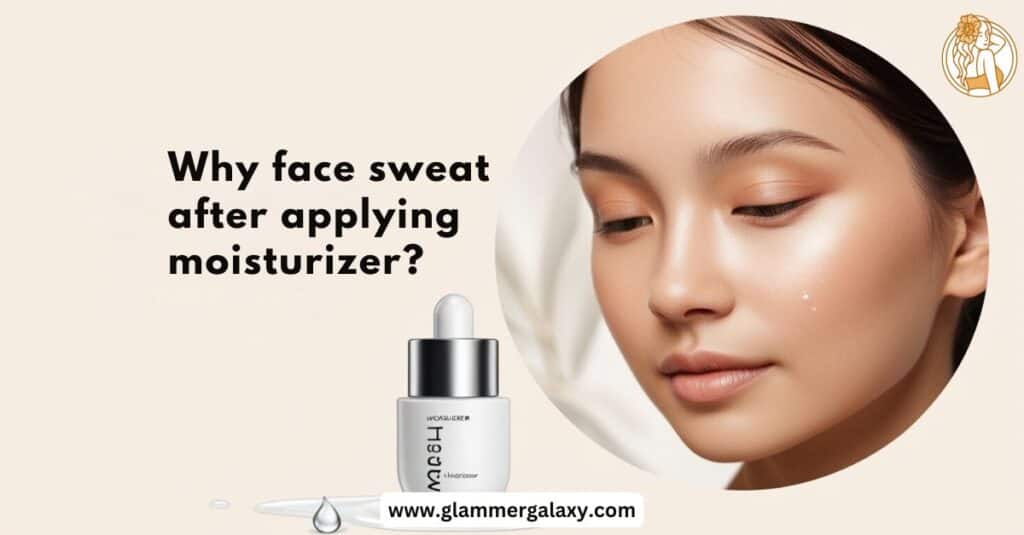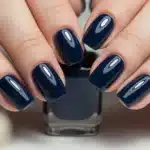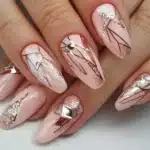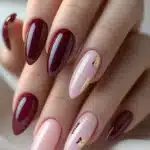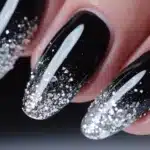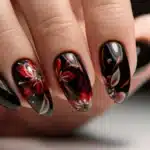Have you ever applied your favorite moisturizer, only to find your face turning into a sweaty mess minutes later? You’re not alone. Many people experience the frustrating phenomenon of sweat after applying moisturizer.
In this comprehensive guide, we’ll look the causes of this sweaty situation and equip you with the knowledge and tools to conquer it once and for all.
The Sweaty Situation: What’s Really Going On?
Before we can tackle the issue of facial sweating after moisturizer application, we need to understand what’s happening beneath the surface of our skin. Let’s break it down:
The science behind facial sweating
Our skin is covered in millions of tiny sweat glands, with the face having a particularly high concentration. These glands produce sweat as part of our body’s natural cooling mechanism. When we apply moisturizer, we’re introducing a new element to this delicate balance.
Sweat glands are divided into two types:
- Eccrine glands: Found all over the body, including the face, producing odorless sweat
- Apocrine glands: Mainly in armpits and groin areas, producing sweat that can lead to body odor
On the face, we’re primarily dealing with eccrine glands. These glands are activated by heat, physical activity, and emotional stress.
Why Moisturizer might trigger the Waterworks
Moisturizers are designed to hydrate and protect our skin, but sometimes they can have unintended consequences. The act of applying moisturizer can:
- Temporarily increase skin temperature
- Create an occlusive barrier on the skin’s surface
- Stimulate blood flow to the face
All of these factors can potentially trigger our sweat glands to kick into overdrive. The massage-like motion of applying moisturizer can also increase blood circulation, which may contribute to a temporary increase in sweating.
Is it actually sweat, or something else?
Interestingly, what we perceive as sweat after applying moisturizer might not always be sweat at all. In some cases, it could be:
- Excess product that hasn’t fully absorbed
- Natural oils from our skin mixing with the moisturizer
- Condensation forming on the skin’s surface due to temperature changes
Understanding the true nature of this “sweat” can help us address the issue more effectively. For instance, if it’s excess product, you might need to adjust the amount you’re applying or switch to a lighter formula.
Moisturizer Mayhem: Ingredients That Make You Glisten
Not all moisturizers are created equal, and the ingredients in your favorite face cream could be contributing to your sweaty woes. Let’s examine the main culprits:
Occlusive agents: The good, the bad, and the sweaty
Occlusive ingredients like petrolatum, mineral oil, and silicones create a barrier on the skin to lock in moisture. While this is great for hydration, it can also trap heat and sweat, leading to that dreaded glistening effect.
Pro tip: Look for lightweight occlusives like dimethicone or opt for products labeled “non-comedogenic” to reduce the risk of sweat-induced breakouts.
Common occlusive agents to watch out for:
- Petrolatum
- Mineral oil
- Lanolin
- Beeswax
- Silicones (e.g., dimethicone, cyclomethicone)
Humectants: Friend or foe in the battle against shine?
Humectants, such as glycerin and hyaluronic acid, attract water to the skin. In humid environments, they can draw moisture from the air, potentially contributing to a sweaty appearance.
Popular humectants in skincare:
- Glycerin
- Hyaluronic acid
- Urea
- Aloe vera
- Propylene glycol
While humectants are essential for skin hydration, using products with a high concentration of these ingredients in humid climates may exacerbate sweating issues.
Emollients: The double-edged sword of skin softness
Emollients like fatty acids and ceramides soften and smooth the skin. However, heavier emollients can sometimes feel greasy and exacerbate sweating, especially in warm weather.
Common emollients in moisturizers:
- Shea butter
- Cocoa butter
- Jojoba oil
- Squalane
- Ceramides
For those prone to sweating, opt for lighter emollients or products that balance emollients with other ingredients for a less greasy feel.
See also : Setting Spray Alternatives
Environmental Accomplices: When Mother Nature Cranks Up the Heat
Our environment plays a significant role in how our skin behaves after moisturizer application. Let’s explore the key factors:
Humidity: The invisible sweat amplifier
High humidity levels can:
- Prevent sweat from evaporating efficiently
- Cause moisturizers to feel heavier on the skin
- Increase overall skin moisture, leading to a sweaty appearance
In humid climates, consider using a mattifying moisturizer or one with oil-absorbing ingredients like kaolin clay or salicylic acid.
Temperature fluctuations: Your skin’s rollercoaster ride
Sudden changes in temperature, like stepping from an air-conditioned room into hot sunshine, can trigger sweating as your body tries to adjust. This is known as thermoregulation, and it’s your body’s way of maintaining a stable internal temperature.
To minimize this effect:
- Allow your skin to gradually adjust to temperature changes when possible
- Use a facial mist to cool your skin before entering a warmer environment
- Apply moisturizer well in advance of exposure to temperature changes
Air conditioning: A sneaky contributor to facial moisture
While AC can keep us cool, it can also dry out the air, prompting our skin to produce more oil and sweat to compensate. This paradoxical effect can lead to both dryness and increased oil production.
To combat this:
- Use a humidifier in air-conditioned spaces
- Opt for a lightweight, hydrating serum under your moisturizer
- Consider using a facial oil at night to balance oil production
It’s Not You, It’s Me: Personal Factors in the Sweat Equation
Our individual characteristics play a crucial role in how our skin responds to moisturizer. Consider these personal factors:
Skin type: Oily, combination, or just plain sweaty?
- Oily skin is more prone to sweating and may require lighter, oil-free moisturizers.
- Combination skin might sweat more in the T-zone after moisturizer application.
- Dry skin can sometimes overproduce oil when over-moisturized, leading to a sweaty appearance.
Understanding your skin type is crucial for selecting the right moisturizer and managing sweating issues. Here’s a quick guide:
| Skin Type | Characteristics | Recommended Moisturizer Type |
| Oily | Shiny, prone to acne | Lightweight, oil-free gel |
| Combination | Oily T-zone, dry cheeks | Lotion or gel-cream |
| Dry | Flaky, tight-feeling | Rich cream or balm |
| Sensitive | Easily irritated | Fragrance-free, hypoallergenic |
Hormonal influences: When your body plays tricks on you
Hormonal changes due to menstruation, pregnancy, or conditions like hyperthyroidism can increase sweat production and oil secretion. During these times, you may need to adjust your skincare routine:
- Use oil-blotting papers throughout the day
- Switch to a lighter moisturizer
- Consider using a mattifying primer under makeup
Medications and medical conditions: Hidden sweat triggers
Certain medications and medical conditions can increase sweating. Always consult with a healthcare professional if you suspect this might be the case for you. Some common culprits include:
- Antidepressants
- Blood pressure medications
- Diabetes
- Menopause
- Hyperhidrosis (excessive sweating disorder)
Sweat-Proof Strategies: Winning the Battle Against Facial Moisture
Now that we understand the causes, let’s dive into solutions to help you achieve that perfect, sweat-free glow.
Moisturizer makeover: Choosing your perfect match
Selecting the right moisturizer is crucial in managing facial sweat. Consider these options:
- Gel-based options for oily skin warriors
- Look for water-based, lightweight formulas
- Ingredients like aloe vera and hyaluronic acid provide hydration without heaviness
- Lightweight lotions for combination complexions
- Opt for oil-free or mattifying lotions
- Consider using different products for different areas of your face
- Oil-free formulas: A universal solution?
- While not perfect for everyone, oil-free moisturizers can significantly reduce post-application sweating
- Look for terms like “oil-free,” “non-greasy,” or “matte finish” on product labels
When shopping for a new moisturizer, consider these sweat-friendly ingredients:
- Niacinamide (helps regulate oil production)
- Salicylic acid (exfoliates and unclogs pores)
- Green tea extract (antioxidant with oil-controlling properties)
- Zinc PCA (helps absorb excess oil)
You might like reading : Nail color options with emerald green dress
Application artistry: Mastering the moisturizer technique
How you apply your moisturizer can make a big difference in preventing excess sweating:
- The “less is more” approach
- Start with a small amount and add more if needed
- Excess product is more likely to cause sweating and clog pores
- Timing is everything: When to moisturize for minimal sweat
- Apply moisturizer to slightly damp skin for better absorption
- Allow time for the product to fully absorb before applying makeup or going outside
- Layering like a pro: Serums, moisturizers, and sunscreens
- Start with the lightest products (e.g., serums) and work your way up to heavier ones
- Wait a few minutes between layers to allow each product to absorb
For optimal absorption and minimal sweating, try this layering technique:
- Cleanse face
- Apply toner (if using)
- Use a lightweight serum
- Wait 1-2 minutes
- Apply moisturizer
- Wait 3-5 minutes
- Finish with sunscreen (during the day)
Powder power: Setting your moisturizer for lasting dryness
Using a setting powder after your moisturizer can help absorb excess oil and reduce shine:
- Choose a translucent powder for a natural look
- Focus on areas prone to sweating, like the T-zone
- Reapply throughout the day as needed
Try this DIY setting powder recipe for oily skin:
- 1 tbsp cornstarch or arrowroot powder
- 1 tsp kaolin clay
- A few drops of lavender essential oil (optional)
Mix ingredients and apply with a large, fluffy brush after moisturizer.
Blotting papers: Your secret weapon against midday shine
Keep oil-absorbing blotting papers on hand for quick touch-ups:
- Gently press (don’t rub) the paper against shiny areas
- Use before reapplying powder or touching up makeup
Pro tip: In a pinch, clean toilet seat covers can work as makeshift blotting papers!
Facial mists: Refreshing without the excess moisture
A cooling facial mist can help control sweat and refresh your skin:
- Look for mists with ingredients like rose water or green tea
- Use as a midday pick-me-up or to set makeup
DIY Cooling Facial Mist Recipe:
- 1/2 cup distilled water
- 1/4 cup witch hazel
- 5 drops peppermint essential oil
- 3 drops lavender essential oil
Mix ingredients in a spray bottle and shake well before each use.
Beyond Moisturizer: Holistic Approaches to Sweat Control
Managing facial sweat goes beyond just your choice of moisturizer. Consider these holistic strategies:
Skincare routine revamp: Balancing hydration and oil control
- Incorporate a gentle, non-stripping cleanser
- Use a toner to balance skin pH and control oil production
- Consider adding a weekly clay mask to absorb excess oil
Sample Skincare Routine for Sweat-Prone Skin:
Morning:
- Cleanse with a gentle, foaming cleanser
- Apply an alcohol-free toner
- Use a lightweight, oil-free moisturizer
- Finish with a mattifying sunscreen
Evening:
- Double cleanse (oil cleanser followed by water-based cleanser)
- Apply toner
- Use a hydrating serum
- Finish with a lightweight night cream
Weekly:
- Exfoliate 1-2 times with a gentle chemical exfoliant (e.g., salicylic acid)
- Use a clay mask to absorb excess oil and impurities
Diet and hydration: Eating your way to less-sweaty skin
What you put into your body can affect your skin’s behavior:
- Stay hydrated with water and herbal teas
- Limit spicy foods, caffeine, and alcohol, which can trigger sweating
- Incorporate foods rich in vitamins A and C for healthy skin function
Sweat-reducing foods to include in your diet:
- Cucumber
- Watermelon
- Spinach
- Almonds
- Green tea
Stress management: Calming your mind to cool your face
Stress can increase sweat production. Try these relaxation techniques:
- Practice deep breathing or meditation
- Engage in regular exercise
- Ensure you’re getting enough sleep
Try this quick stress-relief breathing exercise:
- Inhale deeply through your nose for 4 counts
- Hold your breath for 7 counts
- Exhale slowly through your mouth for 8 counts
- Repeat 4-5 times
Give it a read too : Can I paint on Top of Acrylic Nails
Seasonal Shifts: Adapting Your Routine for Summer Sweat
As temperatures rise, your skincare routine may need some adjustments:
Lightweight alternatives to heavy creams
- Switch to gel moisturizers or hydrating serums
- Look for products containing hyaluronic acid for hydration without heaviness
Summer-friendly moisturizer ingredients:
- Aloe vera
- Cucumber extract
- Hyaluronic acid
- Glycerin
- Niacinamide
Sun protection without the shine
- Choose oil-free, matte-finish sunscreens
- Consider using a tinted sunscreen to replace heavy foundation
Look for sunscreens with these shine-controlling ingredients:
- Silica
- Zinc oxide
- Titanium dioxide
Nighttime moisturizing: Making the most of cooler hours
- Use a slightly richer moisturizer at night when sweating is less likely
- Consider using a sleep mask for intense hydration without daytime shine
Try this overnight hydrating mask recipe:
- 1 tbsp aloe vera gel
- 1 tsp honey
- 3 drops lavender essential oil
Mix ingredients and apply a thin layer before bed. Rinse off in the morning.
Mythbusters: Separating Sweat Facts from Fiction
Let’s debunk some common misconceptions about moisturizers and sweating:
Can you become “addicted” to moisturizer?
Myth: Your skin will become dependent on moisturizer and produce less natural oils. Fact: While your skin can adjust to products, it won’t become “addicted.” However, using the wrong moisturizer can disrupt your skin’s natural balance.
Does skipping moisturizer lead to more oil production?
Myth: If you have oily skin, you should skip moisturizer to reduce oil production. Fact: Depriving your skin of moisture can actually trigger increased oil production. The key is finding the right, lightweight moisturizer for your skin type.
Are all-natural products less likely to cause sweating?
Myth: Natural or organic products won’t cause sweating like synthetic ones. Fact: Natural ingredients can be just as heavy or occlusive as synthetic ones. The formulation and your skin type matter more than whether a product is natural or not.
When to Seek Help: Recognizing Excessive Facial Sweating
While some facial sweating is normal, excessive sweating might indicate an underlying issue:
Signs that your sweating might be more than skin-deep
- Sweating that interferes with daily activities
- Sweating occurs even in cool environments
- Night sweats unrelated to room temperature
Treatment options for hyperhidrosis
If you suspect you have excessive sweating (hyperhidrosis), consult a dermatologist. Treatment options may include:
- Prescription-strength antiperspirants
- Oral medications
- Botox injections
- Iontophoresis (a medical device that uses mild electrical currents)
Consulting a dermatologist: What to expect
During your appointment, be prepared to:
- Discuss your sweating patterns and triggers
- Review your current skincare routine
- Undergo any necessary tests to rule out underlying conditions
Embrace the Glow: Reframing Your Perspective on Facial Moisture
While managing facial sweat is important, it’s also crucial to maintain a healthy perspective:
The benefits of natural skin hydration
- Well-hydrated skin appears more youthful and radiant
- Natural oils help protect your skin from environmental stressors
- A healthy moisture barrier supports overall skin health
Confidence-boosting tips for dealing with facial sweat
- Remember that some facial moisture is normal and healthy
- Focus on overall skin health rather than perfect matte appearance
- Develop a positive self-image that isn’t solely dependent on your skin’s appearance
Celebrating your unique skin journey
Every person’s skin is unique, and what works for one may not work for another. Embrace the process of discovering what works best for your skin, and be patient with yourself along the way.
Avoid these top 7 mistakes while applying moisturizer:
Wrapping It Up: Your Action Plan for Sweat-Free, Glowing Skin
Managing facial sweat after applying moisturizer is a journey, not a destination. Here’s your action plan for success:
- Identify your skin type and choose appropriate products
- Experiment with different application techniques
- Adjust your routine seasonally and based on environmental factors
- Address any underlying health concerns with a professional
- Embrace your skin’s natural processes while striving for balance
Remember, healthy skin isn’t always perfectly matte. By understanding the science behind facial sweating and implementing these strategies, you can achieve a comfortable, radiant complexion that feels great and looks even better. Here’s to your journey towards sweat-free, glowing skin!

Sarah Williams is an experienced blogger and fashion enthusiast at Glammer Galaxy. With a passion for beauty and style, she shares expert insights on hair trends, nail art, and fashion tips. Her creative flair and years of experience make her a go-to source for all things glam!

